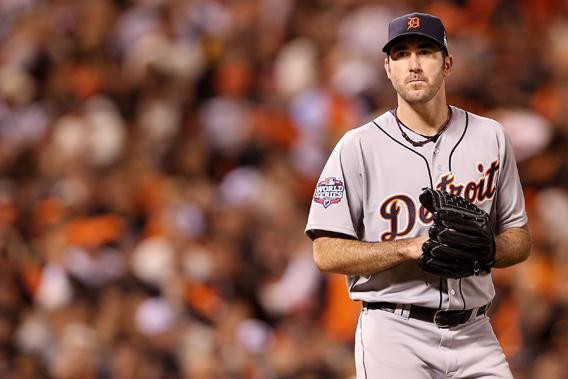How Much Do Baseball Players Make? Salary Insights and Breakdown
Major League Baseball players have varying salaries, but the average in 2023 is roughly $4 million. The highest-paid can earn over $30 million annually.
Baseball continues to be one of America’s most beloved sports, and with that comes substantial earning potential for its players. These athletes’ salaries are determined by a combination of factors including position, experience, skill level, and the team’s financial capacity.
Rookies often earn the league minimum, which surpasses half a million dollars, setting a solid floor for professional players’ incomes. Star players, who become household names, negotiate multimillion-dollar contracts that can be laden with bonuses and endorsement deals, further boosting their earnings. The financial landscape of baseball reflects the sport’s popularity and the revenue it generates, which translates into lucrative careers for those who make it to the big leagues. Salaries also see an annual escalation as broadcast and marketing deals grow larger, ensuring the sport remains a high-paying field for its athletes.

Credit: www.pbs.org
The Big League Paychecks
The Big League Paychecks draw avid attention from fans and aspiring athletes alike. Baseball, America’s beloved pastime, offers more than just fame for its top players; substantial financial rewards are part of the package too. Professional baseball players in Major League Baseball (MLB) earn salaries that range remarkably. Factors include position, experience, and skill level.
Average Salaries Across Positions
Not every player in the MLB takes home the same paycheck. Different positions often command varying average salaries. For instance, star pitchers and power-hitting outfielders usually top the salary charts. In contrast, roles such as relief pitchers or utility fielders might have lower average earnings. These figures fluctuate annually based on contracts and team budgets.
| Position | Average Salary |
|---|---|
| Pitchers | $5.2 million |
| Catchers | $2.4 million |
| Infielders | $3.1 million |
| Outfielders | $4.4 million |
These numbers represent only a fraction of the potential salary for top performers in the league.
Top Earners In Major League Baseball
A select group of elite baseball players signs contracts with eye-popping figures. Such contracts often make headlines and set benchmarks in the sports industry. Here are a few top earners in the MLB, showcasing the lucrative side of professional baseball:
- Mike Trout: Los Angeles Angels – Center Fielder
- Gerrit Cole: New York Yankees – Pitcher
- Nolan Arenado: St. Louis Cardinals – Third Baseman
These players’ contracts not only reflect their exceptional talent but also their ability to draw fans and generate revenue for their teams.
Rookie Salaries Versus Veterans
Delving into the earnings of baseball players, we find a stark contrast between rookies and seasoned veterans. How much do rookies make compared to their experienced counterparts? Let’s explore the starter salaries for fresh talent versus the earning curve for those who have proved their mettle on the diamond.
Starting Figures For Newcomers
As fresh faces in baseball, rookies often begin with fixed salaries. The minimum salary is determined by the collective bargaining agreement between Major League Baseball (MLB) and the Major League Baseball Players Association (MLBPA). Rookie salaries, however, can be affected by draft position, signing bonuses, and individual club budgets.
| Draft Position | Signing Bonus | Base Salary |
|---|---|---|
| First Round Pick | $5,000,000+ | $570,500 |
| Late Round Pick | $10,000 – $100,000 | $570,500 |
As per latest MLB agreement.
Rookies negotiate their deals within a set framework, often relying on performance to boost their future contracts.
The Veteran Players’ Earning Curve
Veteran players see a significant increase in their paychecks. Their earnings hinge on numerous factors like years of experience, performance, and team needs. This group often secures longer contracts with higher guaranteed money based on their track record.
- Experience (3+ years): Commence arbitration eligibility; potential for substantial salary hikes.
- Free Agency (6+ years): Option to sign with any club; salary often skyrockets.
- Accomplishments: Awards and titles like MVP or Cy Young can inflate salaries.
It’s clear that veterans have the leverage to command salaries that reflect their value and ability to draw fans. These players shape the financial landscape of baseball, influencing the market for future athletes.
Minor Leagues, Major Differences
The ‘Minor Leagues, Major Differences’ theme delves into the pay gap between minor and major league baseball players. It’s a deep dive into how baseball talents struggle financially before hitting the big leagues.
Contrasting Minor And Major League Salaries
Baseball players’ salaries differ vastly as they climb the ranks. While the Major League offers fame and fortune, the Minor League is a stark contrast. Minor league players often wrestle with financial stability, earning a fraction of their major league counterparts’ salaries.
Let’s break down the figures:
| Level | Yearly Salary Range |
|---|---|
| Minor League (Lowest Levels) | < $15,000 |
| Minor League (Highest Levels) | $10,000 – $100,000 |
| Major League (Minimum) | $570,500 |
| Major League (Average) | $4.17 million |
While Major League players enjoy larger contracts, Minor League players often take up second jobs. This helps them make ends meet during off-season.
The Road To The Majors: Financial Journey
The path to Major League stardom is not just about talent. It’s also a financial marathon for those in the Minor Leagues. From living on modest pay to budgeting for everyday expenses, the journey is challenging.
Consider the stages:
- Signing bonuses: A financial cushion for some but varies largely.
- Minor League wages: Often below the poverty line, especially for new draftees.
- Progress through the ranks: Increased earnings potential but not guaranteed.
- Major League breakthrough: Finally, a significant salary boost awaits.
In reality, only a small percentage of Minor League talents will ever sign a lucrative Major League contract. The journey is tough, with financial sacrifices every step of the way. Yet, for many, the chance at Major League glory is worth every struggle.
Endorsements And Sponsorships
Endorsements and sponsorships often eclipse the salaries high-profile baseball players earn from the game itself. Brands eagerly strike deals with these athletes, seeing them as valuable ambassadors for their products or services. This collaboration brings players a significant boost in their income, sometimes matching or outshining their on-the-field earnings.
Brand Deals And Players’ Marketability
Top baseball stars are not just athletes; they are brands. Their influence extends far and wide, attracting lucrative brand deals. These partnerships often involve advertisements, signature product lines, and exclusive appearances, making the players key figures in marketing campaigns. Their popularity and image play a crucial role in their marketability, with charismatic and high-performing athletes often at the forefront of the most profitable deals. We see compelling brand-player partnerships in:
- Sports Gear: Custom cleats and gloves
- Apparel: Exclusive clothing lines
- Technology: Endorsements of gadgets and apps
Earning Beyond The Diamond
Baseball players expand their revenue streams with endorsements and sponsorships. These extra earnings give them the financial stability to venture into other businesses or investments. Look at the table below to see the different areas where players are making an impact:
| Area | Opportunity |
|---|---|
| Commercials | TV and online ad campaigns |
| Personal Appearances | Event signings, talks |
| Digital Media | Social media promotions |
| Investment | Startups, real estate |
These endorsements allow players to capitalize on fame and secure a future beyond their playing days. In essence, their earning potential isn’t confined to the number of home runs they hit or strikeouts they pitch, but also in how they appeal to fans off the field.
Contract Negotiations And Clauses
Inside the world of professional baseball, contract negotiations and clauses shape players’ earnings. Teams and players talk for weeks or months. They want deals that pay well and give job security. Contracts can be complex, with terms affecting pay.
Significant Contract Components
Guaranteed money and length of the contract are key elements. These are the base of a player’s financial security. Here’s what often makes up a contract:
- Base salary: The yearly payment a player gets.
- Signing bonus: Extra money for signing a new contract.
- Service time: Years played can affect pay rates.
- Arbitration eligibility: When players can negotiate after their initial years.
Bonuses And Incentives Breakdown
On top of base pay, bonuses boost income. They come from special achievements or playing time. See the common incentives below:
| Bonus Type | Description |
|---|---|
| Performance Bonuses | For achievements like a certain number of hits or strikeouts. |
| Roster Bonuses | Paid for being active on game day or the 40-man roster. |
| Milestone Bonuses | Awarded for career landmarks like 500 home runs. |
The Impact Of Free Agency
The impact of free agency on baseball players’ salaries cannot be overstated. With players gaining the freedom to negotiate new contracts with new teams, the landscape of baseball economics undergoes a seismic shift. This shift not only impacts the players’ potential earnings but also shapes the strategies teams employ to recruit top talent.
Salary Bumps With Bidding Wars
When players enter free agency, a competitive market emerges. Teams vie for the best talent, driving up salaries. Let’s look at how salary increases come about:
- Supply vs. Demand: With limited top-tier free agents available, demand often exceeds supply, leading to higher salaries.
- Average Salary Increase: Players see substantial increases in pay, often securing contracts exceeding their previous deals.
Record-breaking contracts often result from teams outbidding each other. For a clearer picture, here’s an example in table form:
Player B12 Million35 Million| Player | Before Free Agency ($) | After Free Agency ($) |
|---|---|---|
| Player A | 5 Million | 20 Million |
Free Agency As A Career Milestone
Reaching free agency is often seen as a career-defining opportunity for players. Important aspects include:
- Players showcase their skills to a wider market.
- They have a chance to secure life-changing contracts.
- Free agency can signify a player’s peak value.
Negotiation leverage increases as players prove their worth. Free agency also allows for potential team changes that can reinvigorate careers.
Salary Cap And Luxury Tax
In the exhilarating world of professional baseball, player salaries stretch into the millions. But what keeps these sky-high earnings in check? That’s where the concepts of the salary cap and luxury tax come into play. Unlike some sports that implement a strict salary cap, Major League Baseball (MLB) operates with a more flexible financial framework that aims to balance competitive integrity with business strategy.
The Business Side Of Baseball
At the heart of MLB’s financial model lies the luxury tax, also known as the Competitive Balance Tax (CBT). This tax is MLB’s unique approach to leveling the playing field.
Key points about the luxury tax include:- It sets a spending threshold which clubs are encouraged not to exceed.
- Tax rates increase with repeated crossing of the threshold.
- Revenues from the tax are used in various ways, benefiting smaller-market teams.
The absence of a hard salary cap in MLB allows teams more flexibility but also demands shrewd financial management.
Balancing Team Building And Finances
Winning championships often correlates with big spending, but a keen balance is vital. Teams must navigate the luxury tax while assembling a competitive roster.
Here’s how teams strike that balance:- Invest in both stars and underrated players.
- Develop a robust farm system.
- Find value in short-term contracts.
- Use the luxury tax threshold as a guiding fiscal parameter.
Smart teams weigh the benefits of star investments against potential tax penalties to achieve long-term success.

Credit: slate.com
International Leagues’ Pay Grades
Excitement fills the air as we dive into the pay grades of international league baseball players.
Unlike MLB stars, international players see a variety of paychecks.
Baseball Salaries Around The World
Countries worldwide celebrate baseball with their own leagues and pay structures:
- Japan’s Nippon Professional Baseball: Top players earn around $3 million annually.
- Korea Baseball Organization: The cap is set at approximately $1 million.
- Chinese Professional Baseball League in Taiwan: Players seldom make more than $500,000.
- European baseball leagues: Salaries often range from $20,000 to $50,000 a year.
- The Australian Baseball League: Players usually get minimal pay, as it’s a semi-professional league.
Comparing Mlb With International Earnings
Comparing MLB to international leagues showcases quite a gap:
| League | Top Salary |
|---|---|
| MLB | $36 million+ |
| Japan (NPB) | Up to $3 million |
| Korea (KBO) | Up to $1 million |
| Taiwan (CPBL) | <$500,000 |
| Europe | $20,000 – $50,000 |
| Australia (ABL) | Minimal pay |
The MLB offers multi-million contracts, outpacing other leagues by far.

Credit: www.latimes.com
Frequently Asked Questions For How Much Baseball Players Make
What Is The Average Salary Of A Mlb Player?
As of 2023, the average salary for a Major League Baseball (MLB) player is roughly $4 million per year.
What Is The Lowest Paid Mlb Player?
The lowest paid MLB players earn the league minimum, which for the 2023 season is $720,000. These are typically young or less experienced players.
What Is The Highest Paid Mlb Player?
As of my knowledge cutoff in 2023, Max Scherzer of the New York Mets is the highest paid MLB player, earning approximately $43. 3 million annually.
Conclusion
Baseball players’ earnings are as varied as their skill sets, with salaries spanning a broad spectrum. From the rookie beginnings to star-studded multimillion contracts, financial success in baseball mirrors talent and market dynamics. For aspiring athletes, it’s a field where dedication can indeed pay off.
Remember, these figures are ever-changing, reflecting the evolving landscape of professional sports. Stay tuned for the latest stats and updates in the exciting world of baseball salaries.


